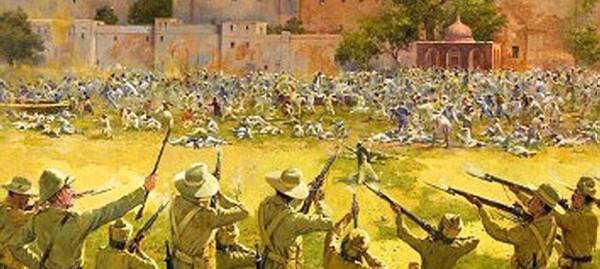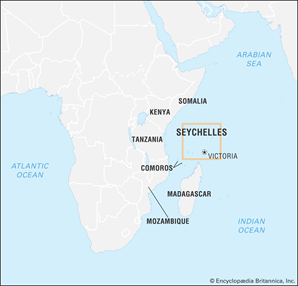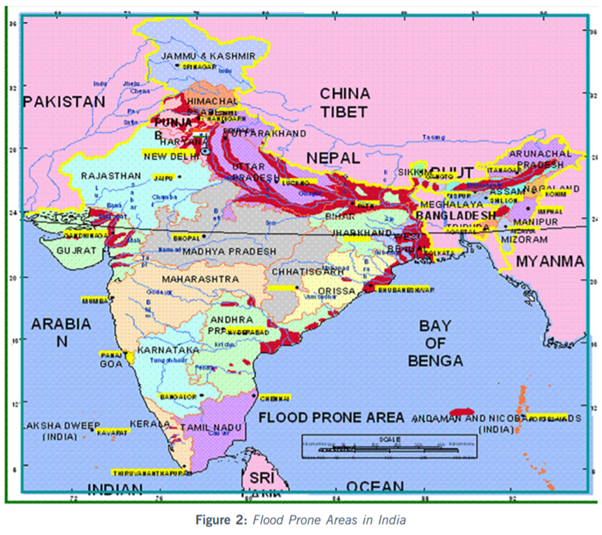Wednesday, 14th April 2021
This Day in History- Birth Anniversary of Bhimrao Ramji Ambedkar
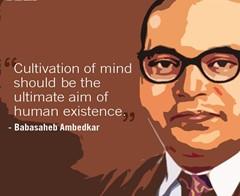
14th April marks the birth anniversary of Bhimrao Ramji Ambedkar. He is considered to be the chief architect of the Constitution of India. He also contributed to India’s progress through his campaigns against social discrimination towards untouchables.
Prime Minister inaugurated 6th edition of Raisina Dialogue
In News
While inaugurating the 6th edition of the Raisina Dialogue recently, Prime Minister Modi highlighted that India has walked the talk during the pandemic by not only ensuring vaccines for its own citizens but also supporting the Covid response efforts of other countries.
|
About the Raisina Dialogue · It is India’s premier conference on geopolitics and geoeconomics committed to addressing the most challenging issues facing the global community. It was started in 2016. · The Dialogue is structured as a multi-stakeholder, cross-sectoral discussion, involving heads of state, cabinet ministers and local government officials, who are joined by thought leaders from the private sector, media and academia. · The conference is hosted by the Observer Research Foundation in partnership with the Ministry of External Affairs, Government of India. · The theme for the 2021 conference is “#ViralWorld: Outbreaks, Outliers and Out of Control”. |
Highlights of the PM’s address
- Need for global systems to adapt themselves: in order to address the underlying causes of the current pandemic and not just the symptoms. There is a need to keep humanity at the centre of the global community’s thoughts and action, and creating systems that address the problems of today and the challenges of tomorrow.
- United Global efforts: He also emphasized that India will continue to share its expertise and resources in the fight against the pandemic.
- Forced to introspect: The pandemic will compel the global community to ask the right questions related to famine, poverty, hunger etc and introspect about the existing institutions.
- Threw light at India’s efforts during the pandemic.
Role of think tanks in foreign policy
- Filling the gap between academia and policy making: Think tanks play an important role in bridging the gap between research activities and policy making. They play an important role in pre- and post-decision-making stages and help to provide policy makers with subject matter expertise. IDSA for instance played an important role in conveying India’s stand on nuclear policy to the international community through various track 2 dialogues.
- Provide a neutral platform to discuss contentious issues: for political leaders, bureaucrats and military officials to discuss contentious issues like border disputes or water sharing agreements.
- Provide assessment on emerging issues: Think tanks have been involved in research activities on areas like environmental degradation, climate change, maritime pollution. The Centre for Science and Environment has been one of the top ranked environmental policy think tanks in the world and has been at the forefront of communicating the urgency for sustainable and equitable development.
Issues confronting think tanks
- Bureaucratic resistance: Bureaucracies in India are particularly resistant to change and outside influence. There is minimal integration of economists, education planners, development experts, security analysts, etc in policy making.
- Private funding: Private funding of think tanks occasionally compromises the perceived intellectual independence of the organisation.
- Missing analysis of processes of governance: Research emanating from think tanks in India focuses on policy but misses out on the processes of governance. Weak policy implementation and process is the greatest challenge that India faces. Processes of governance must be understood and strengthened if policies are to be successfully enacted.
Sources:
https://timesofindia.indiatimes.com/topic/Raisina-Dialogue
https://www.orfonline.org/research/do-think-tanks-impact-public-policy-in-india-and-us/
https://www.orfonline.org/research/existential-dilemma-of-indian-think-tanks/
India-Kazakhstan explore joint production of military platforms
In News
In a recently concluded visit, the Defence Minister of Kazakhstan and India discussed ways to strengthen bilateral defence cooperation between the two countries.
Highlights of the meeting
- Widening defence partnership: Both sides are keen on further widening defence partnership which includes joint production as well as co-development of military platforms. Both India and Kazakhstan have inked a Strategic Partnership treaty in 2009 and a Defence and Military Technical cooperation 2015.
- Joint Military Exercise: Both the countries are already engaged in a joint military Exercise KAZ-IND. And the focus of this drill is to train and equip the contingents to undertake joint operations under mandate of the United Nations.
- Other areas of defence cooperation: Other areas of bilateral defence cooperation include capacity building, training. The Kazakh troops are deployed as part of the Indian battalion in the United Nations Interim Force in Lebanon (UNIFIL).
Significance of Kazakhstan to India
- Geopolitical significance: Kazakhstan’s geo-political existence between Russia and Asia, along with long borders with China, makes it a country of great strategic importance. Kazakhstan remains important for the International North-South Transport Corridor that will provide a multimodal network for moving freight between India, Iran, Afghanistan, Russia, Central Asia and Europe.
- This can help in countering the inroads China is making in the region through the Belt and Road Initiative.
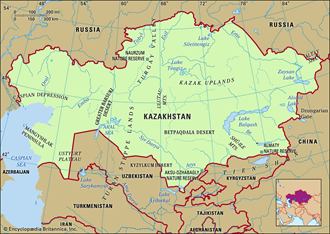
- Economic potential: Kazakhstan is India's largest trading partner in Central Asia. Indian investments in Kazakhstan are in areas such as oil and gas, banking. Indian owned PSU’s like ONGC Videsh, Punjab National Bank, operate in the Central Asian country.
- Energy resources: Uranium is one of the major imports from Kazakhstan. A MOU has already been signed for cooperation between the two sides on supply of Uranium to India. Oil and gas also represent the most important areas in which both countries can collaborate to mutual advantage.
- Active involvement of Kazakhstan in regional organizations: Kazakhstan is an active member of regional organizations like the Shanghai Cooperation Organization (SCO), Eurasian Economic Community (EURASEC), Commonwealth of Independent States (CIS), Collective Security Treaty Organisation (CSTO), etc. Kazakhstan’s clout in regional organizations can help India further its Connect Central Asia strategy that calls for greater interaction in all spheres including political, strategic, commercial, business, cultural, academic etc.
Sources:
financialexpress.com/defence/india-kazakhstan-explore-joint-production-of-military-platforms-for-the-three-services/2232121/
https://www.gatewayhouse.in/india-kazakhstan-relations-challenges-and-opportunities/
https://economictimes.indiatimes.com/blogs/et-commentary/why-india-should-take-kazakhstan-seriously/
A walkthrough New Year’s Day in Different Regions of India
In News
The new year festivals celebrated by people of different regions of the country showcase India's diversity and the spirit of 'Ek Bharat, Shreshtha Bharat'. Every Indian state has its own history behind the New Year celebrations and is celebrated as per their traditional calendar. Some of them include:
|
Name |
Region |
Trivia |
|
Ugadi |
Karnataka, Andhra Pradesh |
Derived from “Yuga Adi” which means ‘the beginning of a new age’. |
|
Gudi Padwa |
Maharashtra |
Gudi which is Brahma’s flag (also called as Brahmadhvaj) is hoisted in every house as a symbolic representation of Rama’s victory over Ravana. |
|
Puthandu (Varuda Pirappu) |
Tamil Nadu |
The day is observed as time to celebrate with family and pray to God. |
|
Vishu |
Kerala |
Offerings to the divine called as Vishukanni are neatly arranged on the eve of the festival and it is considered auspicious to see Vishukanni first thing in the morning. |
|
Baisakhi |
Punjab |
It is the spring harvest festival observed by Hindus and Sikhs alike. |
|
Navreh |
Kashmir |
This day finds mention in Rajtarangini and Nilamat Purana of Kashmir. |
|
Nowruz |
Persian/Iranian New Year |
Associated with evocation of Jamshid, a mythological king of Iran, and numerous tales and legends. |
|
Maha Vishuva Sankranti |
Odiya New Year |
Wear picturesque costumes and dance bare footed over burning charcoals which is a part of the ritual. |
|
Rongali/Bohag Bihu |
Assam |
Unites the different native communities of Assam regardless of their backgrounds and promotes the celebration of ethnic diversity. |
|
Bestu Varas |
Gujarat |
Businessmen and traders start their new account book after closing the old one. |
Image of the Day- Indian Air Force has inducted Light Bullet Proof Vehicles (LBVPs)

The Indian Air Force has inducted Light Bullet Proof Vehicles (LBVPs) to strengthen its capability to tackle terrorists attack at air bases. It is a six-tonne vehicle, designed to keep the engine hidden from an attack. It can with stand AK-47 and sniper rifle bullets and grenade attacks. Capable of speed upto 100 to 120 km, it can also be run on flat tyres. It can accommodate six fully geared Garud commandos and has canopy for a gunner to fire at its target.
Government launches e-SANTA
In News
Government launched an e-commerce platform for marine products named e-SANTA, to connect aqua farmers and exporters by eliminating middlemen.
About e-SANTA
- e-SANTA stands for Electronic Solution for Augmenting NaCSA farmers' Trade in Aquaculture.
- National Centre for Sustainable Aquaculture (NaCSA) is an extension arm of Marine Products Export Development Authority (MPEDA) under the Ministry of Commerce & Industry.
- e-SANTA is a completely paperless and end-to-end electronic trade platform, available in many regional languages.
- The farmers will be able to list their produce with their price, while the exporters will be able to list their requirements and choose the products based on their requirements.
- Acting as a Digital Bridge to end the market divide, it will enable the farmers to get a better price and the exporters get quality products from the farmers directly.

Aquaculture in India
- Definition: Aquaculture is the process of rearing, breeding and harvesting of aquatic species, both animals and plants, in controlled aquatic environments like the oceans, lakes, rivers, ponds and streams.
- Livelihood: The sector provides livelihood to about 25 million fishers and fish farmers at the primary level and twice the number along the value chain.
- Nutrition: Fish being an affordable and rich source of animal protein, is one of the healthiest options to mitigate hunger and nutrient deficiency.
- Types:
- Freshwater aquaculture: It refers to raising and breeding aquatic animals (fish, shrimp, crab, shellfish, etc.) and plants for economic purposes by the use of ponds, reservoirs, lakes, rivers.
- Brackish water aquaculture: It is the cultivation of aquatic organisms where the end product is raised in brackish water, such as estuaries, coves, bays, lagoons and fjords, in which the salinity may lie or generally fluctuate between 5‰ and full strength seawater.
- Brackish water aquaculture in India is traditionally practiced in bheries (manmade impoundments in coastal wetlands) of West Bengal and pokkali (salt resistant deepwater paddy) fields along the Kerala
- Land and Water availability: By virtue of geographical location, India has extensive area for aquaculture in the form of ponds and tanks distributed in almost all the states of India.
- Also, the Ministry of Agriculture and Farmers’ Welfare has identified 2.3 million hectares of paddy fields in India which serve to be a potential resource for integrated fish farming.
- Another untapped resource is the inland saline areas which are unfit for agriculture.
Problems with Aquaculture in India
- Marketing problems: Fish marketing system, a critical driving force for sustainable aquaculture is highly inefficient in India due to the reasons like heterogeneous nature of commodity, perishability, cost of storage and transportation, uncertainties in quality and quantity, large number of intermediaries and the high price spread.
- Low productivity: The average productivity of all the states was at its peak during 2011-12 which has gradually declined and keeps sustaining at a lower rate due to poor quality seeds, disease incidence and poor feed management.
- High Investment: Due to high investments needed in this business, it is difficult for the traditional fishing community to pick-up new technologies in aquaculture.
- Unsustainable land Use: Big entrepreneurs buying cheap land in coastal tracts, especially in Andhra Pradesh and the southern parts of Tamil Nadu, by converting agricultural land into fish farms.
Initiatives by government for Aquaculture
- Centrally Sponsored Scheme on Development of Inland Fisheries and Aquaculture: This scheme aims at development of Freshwater Aquaculture, Brackish water Aquaculture, Coldwater Fisheries and Aquaculture and Productive Utilization of Inland Saline/Alkaline Soils for Aquaculture.
- NABARD scheme for aquaculture: The government has approved Rs 7,522-crore for Fisheries and Aquaculture Infrastructure Development Fund (FIDF) from which entrepreneurs, fishermen, cooperatives will get loans at subsidised interest rate and two years moratorium on repayment of principal amount.
- Coastal Aquaculture Authority Act, 2005: It provides for the establishment of the Coastal Aquaculture Authority for regulating the activities connected with coastal aquaculture in coastal areas. The Act mandates the Central Government to regulate coastal aquaculture by prescribing guidelines, ensure responsible coastal aquaculture.
- National Fisheries Development Board(NFDB) assistance to aquaculture:
- Coastal aquaculture: Assists coastal aquaculture through training and demonstration, need based financial assistance for infrastructure development and New Technologies in coastal aquaculture.
- Intensive Aquaculture in Ponds and Tanks: NFDB assists to support intensive aquaculture in ponds and tanks in existing and new ponds and tanks, establishment of hatcheries for production of fish seed, establishment of fish seed rearing units for production of fish fingerlings.
- Programme on Fish Farmers Development Agency: One of the most important and effective national programme for the promotion of rural aquaculture development, which provides a package of technical, financial and extension support services to fish farmers.
http://www.fao.org/fishery/countrysector/naso_india/en#tcN7009C
https://ariesagro.com/rise-of-aqua-culture-in-india/
https://arccjournals.com/uploads/Final-attachment-published-R-1889.pdf
http://www.fao.org/3/Y1187E/y1187e08.htm
https://www.downtoearth.org.in/interviews/india-is-close-to-aquaculture-disaster-29588
Doomsday Glacier
- Context- Researchers have recently obtained data from underneath Thwaites Glacier that thesupply of warm water to the glacier is larger than previously thought, triggering concerns of faster melting and accelerating ice flow.

- Also known as Thwaites Glacier, the “Doomsday Glacier” of Antarctica – has long been a cause of concern because of its high potential of speeding up the global sea level rise happening due to climate change.
- Because of its humungous size, it contains enough water to raise the world sea level by more than half a metre. Its size is comparable with the size of Great Britain.
- Thwaites isimportant for Antarctica as it slows the ice behind it from freely flowing into the ocean.
- Thwaites’s melting already contributes 4% to global sealevel rise each year.
Primary source: https://indianexpress.com/article/explained/explained-thwaites-glacier-finding-doomsday-melting-worry-7269124/
Milk Tea Alliance
- Context- Online social media movements.
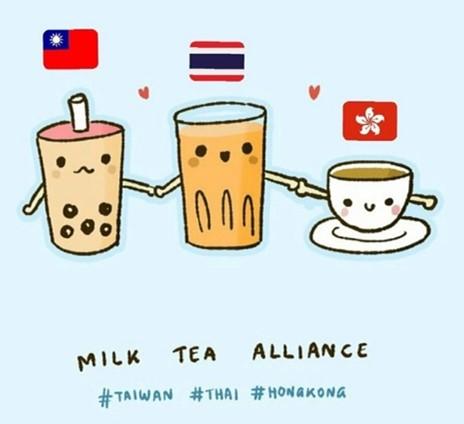
- The Milk Tea Alliance is an online democratic solidarity movement made up of netizens from Hong Kong, Taiwan (Republic of China), Thailand, and Myanmar.
- Why the name “Milk Tea”- in the east and south-east Asia region, tea is consumed with milk, with the exception of China.
- Through this movement, the social media users from Southeast Asian countries have shown outrage against Chinese aggressiveness in the region.
- This alliance does not have any institutional backing.
Primary source: https://indianexpress.com/article/explained/china-thailand-taiwan-coronavirus-nnevvy-bright-6370850/
Danube Sturgeon
- Context- World Wildlife Fund (WWF) report on rampant illegal sale of sturgeon (one of the most endangered species of fish) in the lower Danube region.

- They live mostly in the Black Sea, migrating up the Danube and other major rivers to spawn.
- Danube sturgeons also play an important role as indicators of healthy ecosystems.
- Sturgeons have existed since the time of dinosaurs. They are called ‘living fossils’because their appearance has altered very little over these years.
- Illegal fishing, habitat loss and disruption of spawning migration are threats to sturgeon survival.
- Due to this, five out of the six species native to the Danube are listed as critically endangered in the IUCN Red List of Threatened Species.
BIMSTEC needs to reinvent itself – The Hindu
Essence - Mr. Rajiv Bhatia, a former Ambassador to Myanmar is presenting analyses on issues & scope related to BIMSTEC. Article is written in backdrop of agendas & outcome of 17th BIMSTEC ministerial meeting that was held virtually on April 1, 2021. BIMSTEC need a paradigm-shift in raising the level of our cooperation and regional integration in BIMSTEC countries.
In recent ministerial meet, the foreign ministers cleared the draft for the BIMSTEC charter, recommending its early adoption, conveyed their support for the Master Plan for Transport Connectivity, signed mutual assistance agreements.
BIMSTEC urgently needed a comprehensive Free Trade Agreement to be a real game changer. Ideally it should cover trade in goods, services and investment, but it was missing from recent meeting. The goal now should be to overcome the obstacles leading to BIMSTEC’s success. First, a strong BIMSTEC needs a cordial and tension-free bilateral relations among all its member-states. This has not been the case, given the trajectory of India-Nepal, India-Sri Lanka, and Bangladesh-Myanmar ties in recent years.
Why should we read this article?
- To understand the origin & importance of BIMSTEC.
- To know about key outcomes from recent ministerial meeting of BIMSTEC.
- To understand the challenges before this regional grouping & what are the main knots to untangle for realising the shared dream of Peaceful, Prosperous and Sustainable Bay of Bengal Region.
Link - https://www.thehindu.com/opinion/op-ed/bimstec-needs-to-reinvent-itself/article34313033.ece
Why government’s recognition of allied healthcare professionals is a paradigm shift - IE
Essence - The stress of modern lifestyle, rapid urbanisation, rising chronic non-communicable disease burden, and an increasing proportion of elderly which is expected to increase to 19 per cent by 2050, have necessitated a change in delivering healthcare. Caring for patients with mental conditions, the elderly, those in need of palliative services, and enabling professional services for lifestyle change related to physical activity and diets, all require a trained, allied health workforce. The recently passed The National Commission for Allied and Healthcare Professions Bill, 2020 (NCAHP) is not only timely but critical to this changing paradigm. In this context, this article highlights the significance of the bill.
Why you should read this article?
- Know about the important provision of the bill such as regulation and maintenance of standards of education and services, classification of allied professionals using the ISCO code, setting up a central statutory body as a National Commission for Allied and Healthcare Professions, etc.
- Understand the vital role of allied professionals in the delivery of healthcare services and how this bill has the potential to overhaul the entire allied health workforce by establishing institutes of excellence and regulating the scope of practice by focusing on task shifting and task-re distribution among others.
Open Jail: Step towards Reformatory Justice
Present Conditions of Jails
- Present conditions of Jail paints a miserable picture of living conditions like Overcrowding, Understaffing, Prison violence, Poor medical facilities, Incarceration of undertrials for long periods, poor access to legal aid and rampant sexual abuse of inmates.
- To solve the issue the concept of Open Jails are being used in Rajasthan, Pune and other major cities
Open Jail
- It refers to Prison Without Walls, bars and locks. It does not confine prisoners completely.
- It requires prisoners to earn living to support their families & living with them inside the jail
- It upholds United Nations Standard Minimum Rules for the Treatment of Prisoners that provides no physical security against escape but rely on the self-discipline of the inmates, prisons
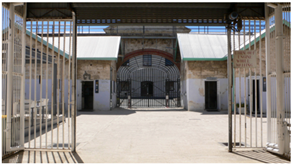
Outcomes
- Upholds Certain Rights like Right to Employment, Right of Personal Life & Liberty which includes Right to contact with outside world.
- Prevent an individual from becoming a hardened criminal as the atmosphere here is to train and bring attitudinal change in a prisoner
- Upholds Principle of Modern Justice whose purpose is to rehabilitate rather than punish.
- Reduce overcrowding in Jails
- Allows an individual a chance to make a fresh start and lead an honest life.
Where can we use this case study?
Innovative Case Study to reform Jails, Example for improving Governance and Approach of Justice System, how to bring empowerment of the vulnerable section.
Share the article
Get Latest Updates on Offers, Event dates, and free Mentorship sessions.

Get in touch with our Expert Academic Counsellors 👋
FAQs
UPSC Daily Current Affairs focuses on learning current events on a daily basis. An aspirant needs to study regular and updated information about current events, news, and relevant topics that are important for UPSC aspirants. It covers national and international affairs, government policies, socio-economic issues, science and technology advancements, and more.
UPSC Daily Current Affairs provides aspirants with a concise and comprehensive overview of the latest happenings and developments across various fields. It helps aspirants stay updated with current affairs and provides them with valuable insights and analysis, which are essential for answering questions in the UPSC examinations. It enhances their knowledge, analytical skills, and ability to connect current affairs with the UPSC syllabus.
UPSC Daily Current Affairs covers a wide range of topics, including politics, economics, science and technology, environment, social issues, governance, international relations, and more. It offers news summaries, in-depth analyses, editorials, opinion pieces, and relevant study materials. It also provides practice questions and quizzes to help aspirants test their understanding of current affairs.
Edukemy's UPSC Daily Current Affairs can be accessed through:
- UPSC Daily Current Affairs can be accessed through Current Affairs tab at the top of the Main Page of Edukemy.
- Edukemy Mobile app: The Daily Current Affairs can also be access through Edukemy Mobile App.
- Social media: Follow Edukemy’s official social media accounts or pages that provide UPSC Daily Current Affairs updates, including Facebook, Twitter, or Telegram channels.

